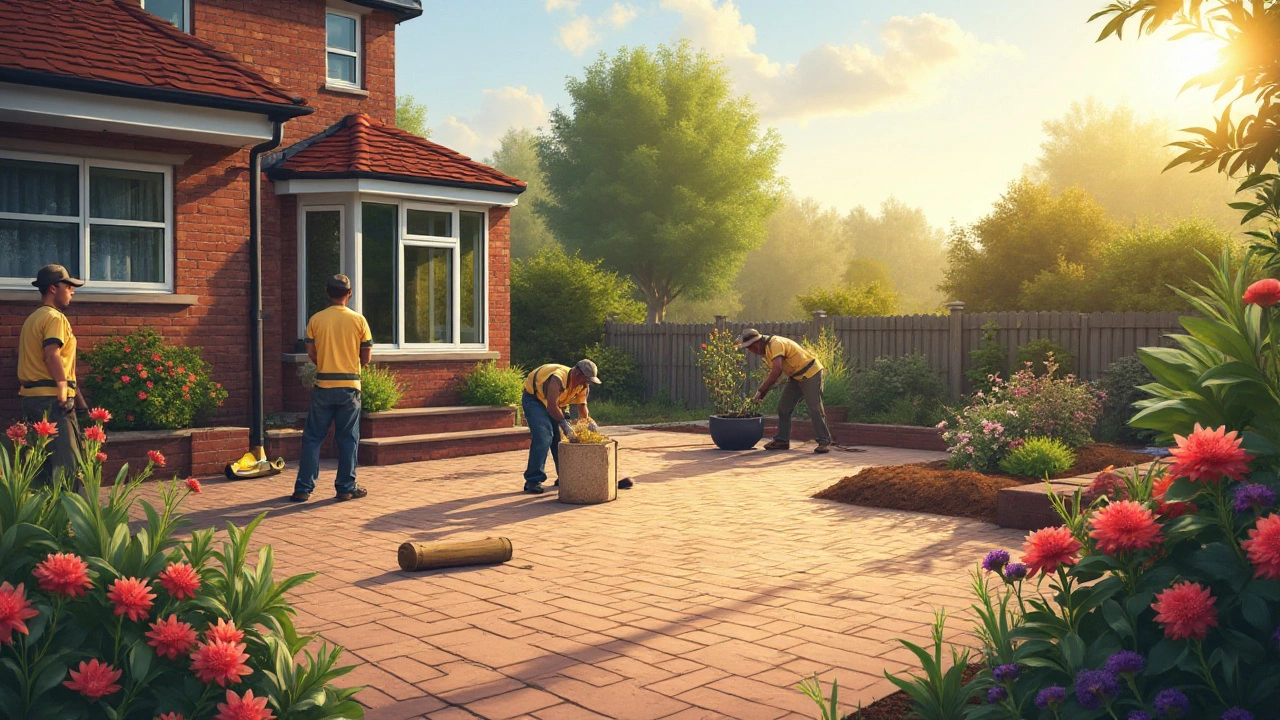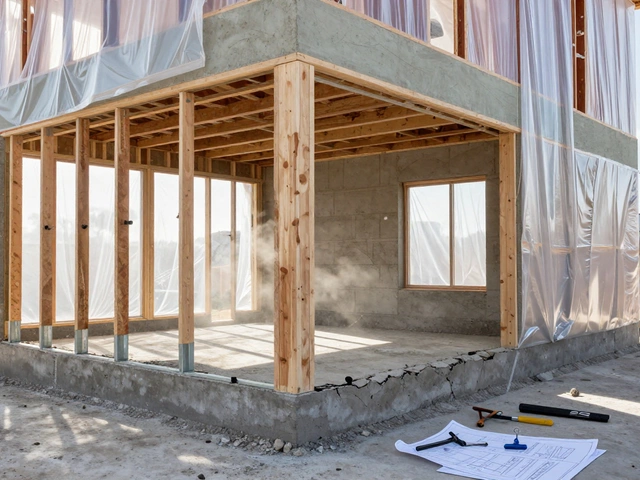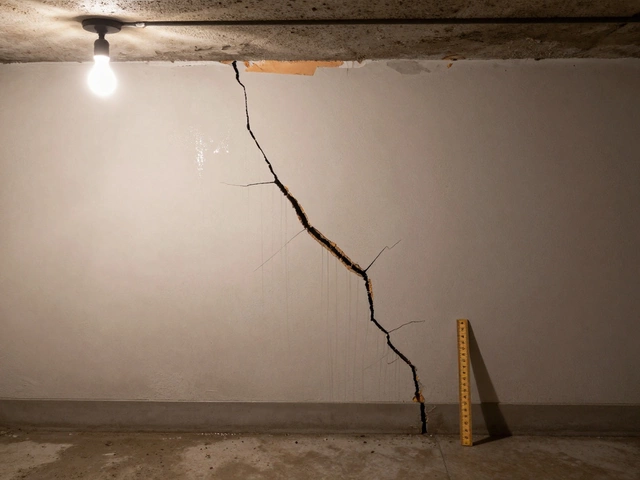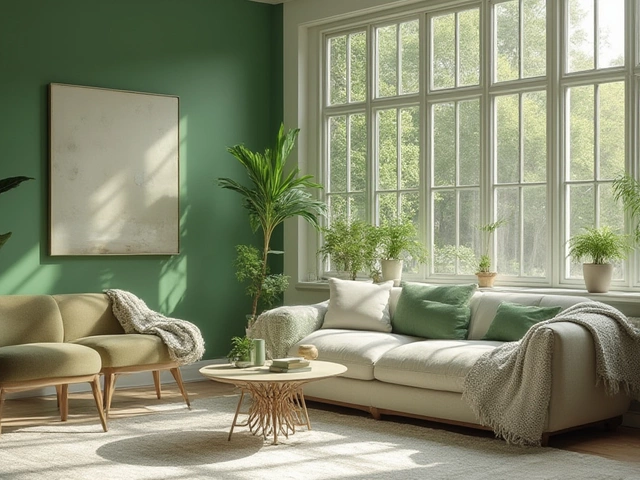Transforming your outdoor space is exciting and complex, with budgets often being the primary concern. Knowing how to estimate landscaping costs helps in planning a project that suits your financial limits while achieving your dream look.
Whether you're renovating your garden or starting from a blank slate, calculating costs involves several factors that are good to consider early on. From design aspirations to material choices, each decision can significantly affect the total expenditure.
In this guide, we'll unravel the nuances of landscaping costs, explore the influence of labor and local pricing, and offer strategic tips to manage your budget effectively. Dive in to discover how to bring your landscape vision to life without breaking the bank!
- Understanding the Basics of Landscaping Costs
- Factors Influencing the Budget
- Design and Material Selections
- Labor and Local Pricing Variations
- Tips for Managing and Reducing Costs
Understanding the Basics of Landscaping Costs
When diving into the realm of landscaping costs, it is essential to start with a grasp of the various components that form the foundation of your budget. At first glance, you might think it's just about buying some plants and tools, but the reality stretches far beyond this simplistic view. Landscaping is akin to art, where each aspect impacts financial commitments, spanning design, materials, and labor. Significantly, landscaping is not merely aesthetic but also a means of increasing property value. According to a study by the American Society of Landscape Architects, well-done landscaping can add up to 15% to a home's value. This makes understanding budgeting more of an investment than an expense.
To get a true sense of what you'll be spending, begin by identifying the purpose and scale of your project. Are you creating a modest garden nook for relaxation, or do you envision an expansive oasis with pathways and water features? The scope will dictate whether you're looking at a modest expenditure or venturing into a six-figure project. Knowing your goals allows for more educated decisions about where to allocate funds. Start by drafting a plan or consulting a landscape designer to gain an accurate forecast of your gardening expenses. Early consultations can often offer savings, as designers help avoid costly mistakes later on.
Material is another principal factor — the type, quality, and quantity of resources like soil, stones, plants, and even water systems can vary widely in price. Take, for example, the difference between using local stones versus imported flagstones; the costs for the latter can escalate significantly due to shipping and rarity. Local environmental considerations also play a part—what thrives in your climate, the long-term maintenance, and sustainability concerns. A landscaper in Vancouver, where rainfall is abundant, might prioritize plant selection differently than someone in arid regions.
"The secret to designing a delightful and functional outdoor space is understanding how each component affects your bottom line," says John Smith, a renowned landscape architect.
Also intertwined with materials are aesthetic choices, like color schemes or themes that can either escalate costs significantly or provide savings when done smartly. Opting for native plants not only reduces your water bill but also lowers maintenance costs. Studies show native plants are more resilient and favor the local fauna, fostering a balanced ecosystem right in your backyard.
Labor and professional assistance is another major cost consideration. Whether it's hiring skilled artisans for specific tasks or general landscape installers, the level of expertise you require will impact your budget. In urban centers, labor costs can be particularly high, making up a substantial portion of your landscape budget. However, the expertise can save money in the long run by ensuring correct installations and minimizing potential damage. A helpful tip is to inquire about labor rates in your locale and compare them offers from different service providers.
As you embark on your landscaping journey, remember that each cost element interplays with others, affecting the project lifecycle from inception to maintenance. Comprehensive planning allows you to anticipate expenses better and align your vision with financial realities. By appreciating these fundamental aspects, your path to transforming your outdoor space becomes not only clearer but also more manageable and rewarding in achieving a stunning and budget-conscious landscape.
Factors Influencing the Budget
When it comes to landscaping costs, there are several factors at play, each contributing to the final tally in distinctive ways. First and foremost, the size of your project will greatly impact the budget. Larger areas naturally require more materials and time, driving up costs. It's crucial to map out the dimensions of your space meticulously, as even minor miscalculations can lead to significant changes in requirements and, consequently, expenses. Another important element is the geographical location; local climate conditions dictate which plants will thrive, which might influence both the choice and cost of greenery.
Material selection is another critical factor. High-quality materials can transform a landscape, but they come at a price. From luxurious stone pathways to durable outdoor furniture, each choice offers a variety in pricing. Balancing aesthetics with cost-effectiveness is key. Interestingly, homeowners often overlook the long-term maintenance costs associated with their material choices, which should also be a consideration during the planning phase. For instance, exotic plants may introduce beauty but demand unique care that could strain budgets over time. According to John Peters, a renowned landscape architect, "Investing in locally sourced materials can significantly reduce both initial and long-term costs while supporting the local economy."
Labor is a pivotal component of the landscaping costs equation. The expertise and experience of the workforce directly affect the quality of the end result. Skilled labor typically commands higher rates; however, the precision and artistry such professionals bring can add immeasurable value to the project. Local wage standards will influence these costs, with certain regions having higher labor rates due to living costs or demand for skilled workers. It's not uncommon to see fluctuating rates across different seasons as well, with spring and summer often being peak periods for landscape projects.
Permits and regulations also play into the financial picture. Many areas have specific regulations that require permits for certain landscaping activities, such as altering water drainage paths or building retaining walls. Failure to comply can result in fines that unexpectedly swell your budget. It's advisable to research the necessary legal requirements before starting your project, ensuring all paperwork and permits are meticulously managed. This proactive approach helps prevent surprises and aligns your budget with regulatory expectations.
The design complexity can further influence landscaping costs. Custom or intricate designs usually involve more detailed work, which means more labor and possibly specialized skills. Each unique aspect must be carefully planned and executed, from water features that demand precise installation to lighting that needs professional electrical work. Hiring a designer to bring your vision to life can be an added expense, but it may save money and frustration in the long run by steering clear of costly mistakes. It's often said that a well-conceived plan is worth its weight in gold in the world of landscaping.

Design and Material Selections
Embarking on a landscape project can feel much like painting on a grand canvas, where your choice of design and materials plays a crucial role in shaping the final masterpiece. Picking the right combination is not just about aesthetics but also about making functional and cost-effective decisions that align with your budget and environment. Begin by considering the style of your home and existing exterior elements. Blending these with new designs not only ensures harmony but can also enhance property value considerably.
When it comes to materials, the spectrum ranges from affordable choices like concrete and mulch to premium selections such as stone and exotic plants. Each option has its distinct benefits and price points, influencing the overall landscaping costs. For instance, while gravel paths are budget-friendly, a cobbled stone path provides a timeless look at a higher price. Opt for materials that match the climate conditions of where you live. For example, the wet weather in Vancouver might favor hardy materials like treated wood or specific stone types that can withstand moisture without frequent maintenance.
Thoughtful design takes sustainability into account. Native plants, for instance, serve as a brilliant choice as they require less water and maintenance, thereby reducing ongoing costs. These plants are also more resilient to local pests and climatic challenges. As quoted in a landscaping magazine,
The best landscapes are those that beautifully harmonize with their surroundings while minimizing environmental impact.It's always beneficial to invest in a sustainable design that can lead to savings in water usage and reduce the need for pesticides and fertilizers.
The cost of materials is often compounded by their sourcing and transportation. Local materials tend to be cheaper due to reduced delivery charges, not to mention their typically lower environmental footprint. If you fancy exotic plants or imported stone, ensure you factor in import and transportation taxes, which can sometimes double the base cost, shifting your financial plans unexpectedly. A strategic approach would be to allocate around 50% of your budget to your design and material selection to accommodate the inevitable fluctuations during procurement and installation.
Let's not forget the choice between hardscape and softscape materials. Hardscapes like patios, walkways, and retaining walls offer more permanent structures but can significantly add to your landscaping costs. Choosing between these elements involves weighing the visual impact against the durability and lifespan of such installations. Often, homeowners alternate between hard and soft materials to break monotony and allow flexible budgeting. Striking the perfect balance can lead to not only aesthetically pleasing but financially savvy landscape renovations.
For an insightful breakdown, here’s a basic comparative table that can help with decisions:
| Material | Average Cost per Square Foot | Durability |
|---|---|---|
| Concrete | $6 to $10 | Moderate |
| Natural Stone | $15 to $30 | High |
| Gravel | $1.25 to $2 | Low-Moderate |
In conclusion, combining creative design with judicious material selections is key to a successful landscaping project. By prioritizing your desires alongside budget realities and sustainability, you craft a landscape that’s not just beautiful, but also enduring and financially wise.
Labor and Local Pricing Variations
Labor costs in landscaping can vary significantly based on several factors, including location, demand for services, and the specific skills required for your project. In bustling urban centers like Vancouver, where the demand for professional landscaping is high, skilled labor might cost more than in rural areas. This difference often comes down to the cost of living and competition among service providers. Homeowners in these areas might find themselves paying a premium for high-quality work, reflecting the expertise and demand in the local market.
It's important to consider the type of labor needed for your specific landscaping project. Simple gardens might require basic gardening skills or general labor, which tends to be less expensive. On the other hand, intricate designs that include water features, sophisticated stonework, or specialized planting demand expert artisans whose services come at a higher price. For instance, the hourly rate for a general landscaper might range between CAD 20 and 50, but for specialized services, these figures can easily double. Local demand influences these costs heavily, with costs often fluctuating seasonally alongside growing cycles or post-storm repair periods.
Getting quotes from multiple service providers in your area can help you understand these local pricing variations better. When requesting estimates, ensure that you ask for a detailed breakdown that shows labor separately from materials. This transparency offers a clear view of where potential savings can be made. It’s also wise to inquire about package deals or discounts available for off-season work. As renowned industry expert Peter Walker once said,
"Knowledge of local pricing dynamics can empower homeowners to make informed decisions, saving both money and resources in their landscaping endeavors."
Keeping track of the trends in local pricing can make all the difference. Many municipalities and local governments offer resources and data on typical landscaping expenses, which can be invaluable when planning your budget. In addition, online platforms and community forums are great places to gather insights from fellow homeowners about local costs and recommendations for reliable, efficient service providers. Using these resources enhances your understanding, making it easier to budget wisely and ensure that every dollar spent brings you closer to your ideal outdoor space.

Tips for Managing and Reducing Costs
When you're planning your landscaping costs, it's always wise to keep an eye on potential areas where savings can be achieved without sacrificing the aesthetics or quality of your outdoor space. One effective strategy is prioritizing the aspects of your project that are most important to you and where you would like to splurge ever so slightly. For example, if having a water feature is your ultimate desire, then perhaps that is where your higher budget allocation should go, while opting for more budget-friendly options elsewhere. Implementing a phased approach can also be beneficial, where you split the projects into phases over a few years to spread the costs and focus on key areas one at a time.
Sometimes, a simple cleanup can make a huge difference. Before you even begin, try refreshing your existing landscape by trimming, pruning, and clearing overgrown areas to see what elements you really need to add or replace. This initial step might reveal hidden charm in your current setup that only requires a bit of enhancement rather than an entire overhaul. Additionally, always take the time to compare and source multiple quotes from local landscape professionals to ensure you're receiving the best value for your specified budget.
Outdoor renovation projects also benefit greatly from meticulous planning, particularly in selecting plants and materials. Consider using native plants that are naturally suited to your local climate, as they typically require less water and maintenance, which cuts down on long-term upkeep costs. Recycle where possible; using reclaimed wood and stones can add uniqueness to your garden while being gentle on the pocket. On this point, James S. of the Canadian Gardening Association mentions, "Creative use of inexpensive materials often yields a stunning landscape that is both eco-friendly and budget-friendly."
Creative use of inexpensive materials often yields a stunning landscape that is both eco-friendly and budget-friendly."
It's also vital to plan for potential hidden expenses like permits, especially if you plan to add features such as extensive decking or retaining walls. Research and understand the regulations in your area to prepare for these additional costs ahead of time. Maintaining flexibility is key too. As you work on your project, new opportunities for savings might arise. Sometimes the best outcomes happen when you're open to slight deviations from your original plan as new ideas surface. Often, some of the most seasoned gardeners will testify to the beauty of imperfection in creating a natural, inviting environment.
Finally, making the landscaping process a family project can not only cut down on labor fees but also become an opportunity for bonding and skill-building. Engage family members in planting, digging, or even constructing small features such as garden beds or simple walkways. Just ensure you have the right tools and guidance to safely and effectively carry out these tasks. By taking a hands-on approach, you not only save but also contribute directly to the creation of an outdoor space that resonates with personal touches and pride.








